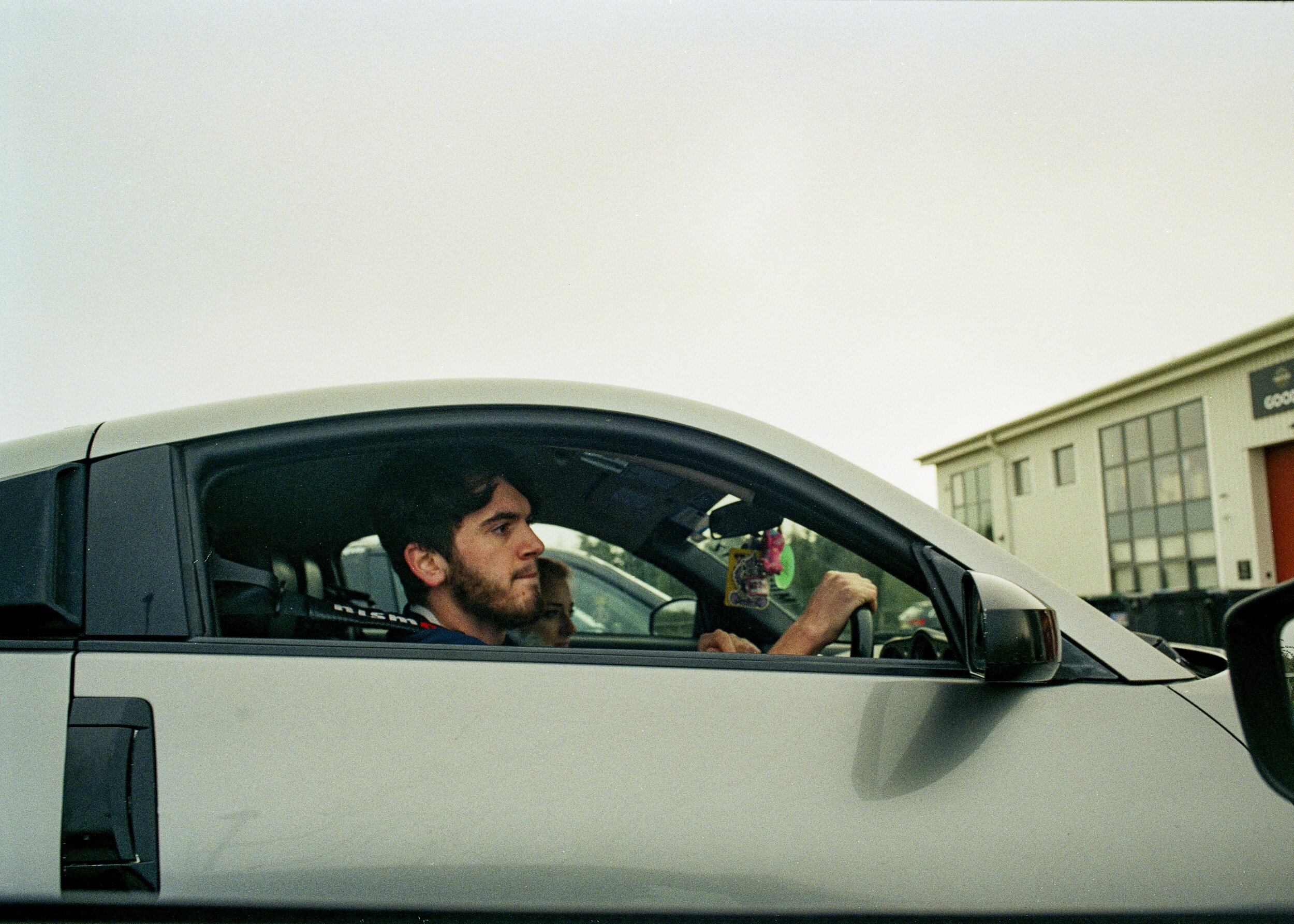falmouth Portfolio
Welcome to my photography portfolio, where death is a recurring theme that has deeply shaped my artistic journey over the past few years.
The projects showcased here are an exploration of the five stages of grief I Personally experienced after the death of a close friend [denial, anger, bargaining, depression, and acceptance] each offering a visual interpretation of these intense emotions.
My work is profoundly influenced by my fascination with social spaces and human interactions. Whether I’m on the basketball court, spending time with friends and family, travelling, or working as an Art Technician, I’m constantly drawn to the connections between people and their environments. This passion is woven into my photography, where I capture the nuanced relationships between individuals, their surroundings, and the broader world they inhabit.
boy racer
In Boy Racer, I used photography as a means to confront the denial and anger that often accompany grief. These images are a personal exploration of the raw emotions stirred by the reality of death. When someone close to us passes, self-reflection becomes inevitable, and through this project, I’ve tried to capture my own struggle with accepting loss.
I delved into the friendships and relationships that blossomed within Dorset's car scene, using this project to better understand the connections that shaped this part of my life. Immersing myself in this world for two weeks, leading up to a final farewell drive from Haynes Motor Museum for my close friend Curtis, allowed me to document these bonds. Cementing myself in that community, even briefly, provided a way to navigate the intense emotions of anger and denial tied to grief. This journey became more than just a way to remember a dear friend; it was a means of reflecting on how I cope with and portray death.
With Boy Racer, my goal was to capture the essence of a specific group of people and the subculture they belong to while reconnecting with the practice of photographing and documenting their lives after my move to London. I succeeded in creating a visual narrative that delves into how people process and deal with death.
SKOTLANTI AUTOLLA
Skotlanti Autolla is a continuation of my journey through grief, this time focusing on the stages of depression and the struggle for acceptance. In this project, I documented a road trip to Scotland with friends, using photography as a way to distance myself from the weight of depression, loneliness, and insecurities. The vast landscapes of the Scottish Lowlands served as a backdrop for this emotional retreat, where I captured not just the scenery, but the shared feelings of those with me.
At this low point, my friends shied away from the camera, unwilling to be seen in their vulnerability. Losing someone so full of life left us feeling isolated, misunderstood, and disconnected from the world around us. We clung to memories of happier times, summer days spent playing basketball, camping trips, and the simple joy of being together.
Despite the Breath-taking beauty of the Scottish lowlands, I felt trapped in the moment, unable to fully embrace the experience. The acceptance of death is a difficult reality to face, but as I sat alone in the remote, serene landscape, I finally began to find the peace and acceptance I had been searching for. This project marks the turning point in my grief—a quiet acknowledgment that it was time to move forward.
APOCOLYPTIC INSOMNIA
Apocalyptic Insomnia marks the final chapter in my exploration of grief, following the intense emotional landscapes of Boy Racer and Skotlanti Autolla. This project captures the profound loneliness and disconnection that defined my experience during the pandemic lockdown. In January, amidst a city that had been silenced by restrictions, I used photography to express the deep isolation and insomnia I felt, an echo of the broader societal distress.
By documenting the journey from Lewisham, my birthplace, to Greenwich, where I currently reside, I aimed to reconcile with a city that had grown distant and imposing. These images represent not only my struggle to adapt to a new sense of normalcy but also a personal attempt to come to terms with the vastness and alienation I felt. Through this work, I confront the reality of living in a world that has changed irrevocably and find a path towards acceptance, both of the city and the shifting landscape of my own emotions.












